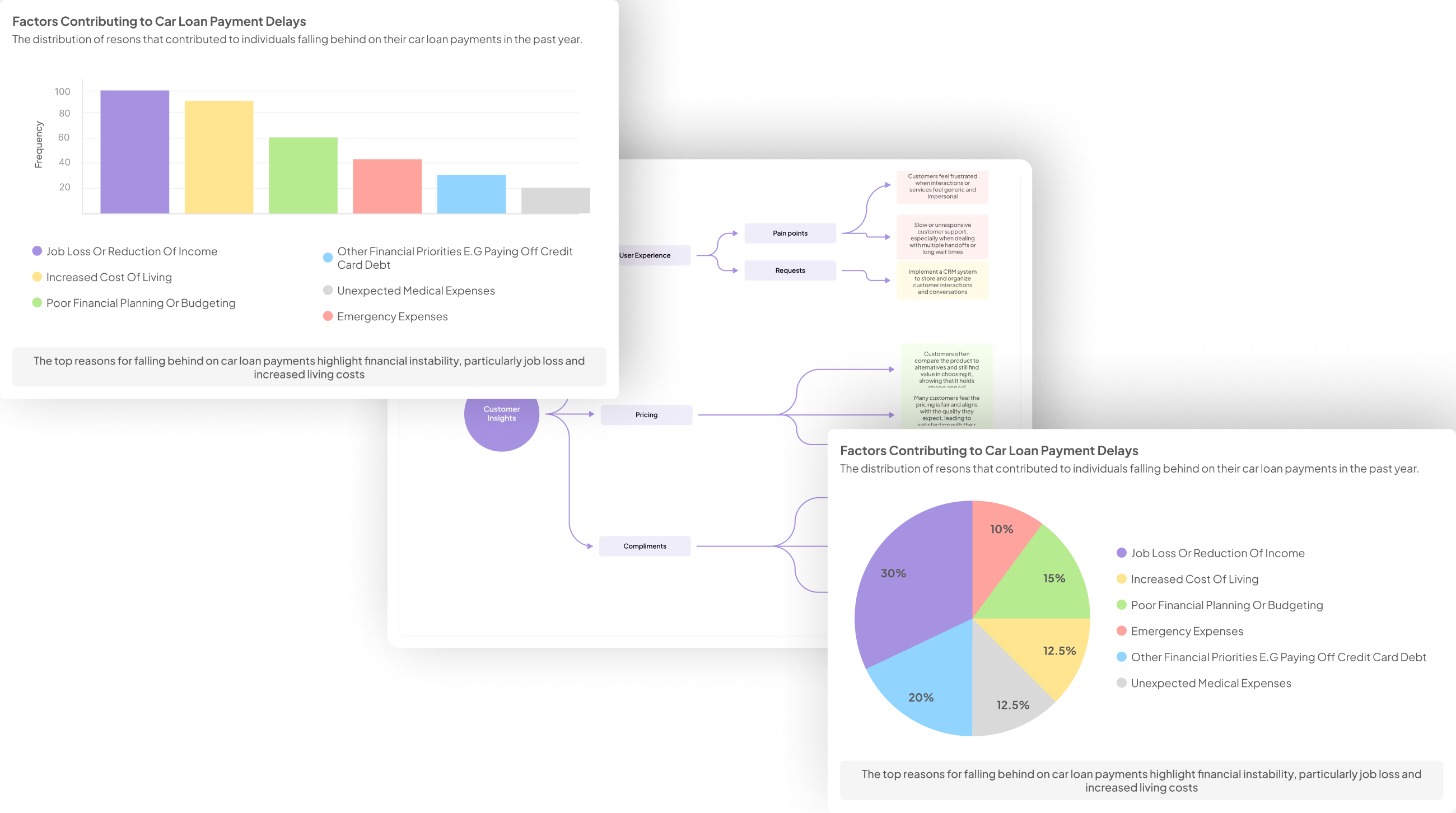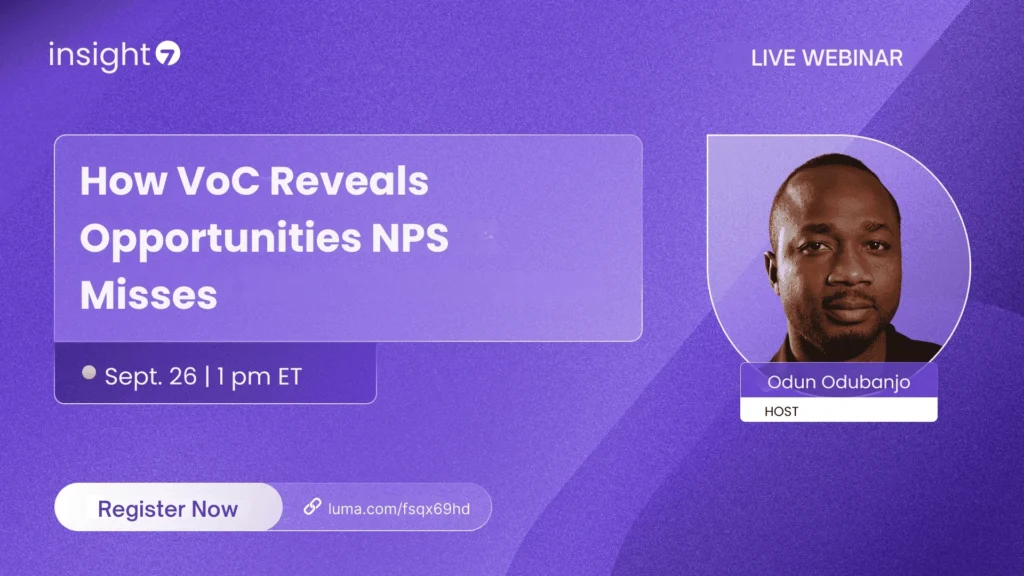Speech & Text Analytics: Clear Comparison
-
Bella Williams
- 10 min read
To effectively harness the power of data from customer interactions, a robust approach to Conversational Insights Evaluation is essential. Businesses today capture vast amounts of information during customer conversations, but merely collecting data is not enough. Companies must evaluate these conversations to understand underlying trends, customer needs, and areas for improvement.
Conversational Insights Evaluation serves as a bridge between raw data and actionable strategies. By analyzing speech and text analytics, organizations can gain deeper insights into customer behavior and preferences. This evaluation process not only aids in enhancing customer service but also drives informed decision-making across the business. Implementing effective evaluation techniques equips companies to remain competitive in today’s fast-paced market.
Generate visualizations from your qualitative data. At Scale.

Conversational Insights Evaluation: The Basics of Speech Analytics
Effective conversational insights evaluation begins by understanding the fundamentals of speech analytics. This technology allows organizations to transcribe audio dialogues, transforming raw conversation data into valuable insights. The process typically starts with transcribing recordings, which lays the groundwork for deeper analysis. Advanced tools enable users to analyze multiple files simultaneously, streamlining the workflow and enhancing productivity.
Once transcripts are available, insights are extracted through various analytical techniques. Analysts can identify customer pain points, extract key themes, and summarize conversations, providing actionable information for decision-making. Additionally, visual tools aid in recognizing trends over time, enriching the evaluation process. By emphasizing these steps, businesses can unlock significant value from their speech interactions, leading to improved customer engagement and service optimization. Understanding these basics is essential for any organization aiming to utilize speech analytics effectively.
Understanding the Role of Speech Analytics in Modern Business
Speech analytics is becoming an essential tool for modern businesses seeking to enhance customer engagement. By analyzing conversations, organizations can gain significant insights into customer preferences, behavior, and pain points. This process helps shift sales representatives from merely taking orders to offering valuable consultations that align more closely with customer needs.
Understanding the role of speech analytics in modern business involves examining how these insights are generated and utilized. It starts with transcribing spoken interactions into text, which is then analyzed for patterns and trends. Businesses can adjust their training methods based on this analysis, leading to improved customer communication. By focusing on conversational insights evaluation, companies can refine their strategies, ensuring alignment between market demands and service delivery while maintaining a competitive edge.
Key Metrics for Evaluating Speech Analytics Performance
To effectively evaluate speech analytics performance, businesses must monitor several key metrics. These metrics enable organizations to understand the quality and effectiveness of their speech analytics solutions, ensuring they derive actionable insights. One essential metric is call sentiment analysis, which determines customer mood during conversations. Additionally, measuring the accuracy of transcriptions can directly impact the quality of insights derived, making it crucial for businesses to prioritize this aspect.
Another important metric is call resolution rates, as it reflects how well customer inquiries are addressed. Tracking the average handling time can provide insight into efficiency, helping teams optimize workflows. Finally, the frequency of recurring topics or issues detected across calls can guide businesses in improving their services. By focusing on these metrics, organizations can enhance their Conversational Insights Evaluation process, leading to better performance and customer satisfaction.
Evaluate Performance on Customer Calls for Quality Assurance.
Text Analytics: Conversational Insights Evaluation Techniques
Text analytics plays a crucial role in deriving actionable insights from customer conversations. Conversational insights evaluation techniques are essential for organizations seeking to enhance communication effectiveness and understand customer sentiment. By effectively analyzing text data, companies can capture nuances from customer interactions, which traditional methods often overlook.
Several techniques can be employed in this evaluation process. Firstly, sentiment analysis enables businesses to gauge customer emotions surrounding their experiences. Secondly, thematic analysis identifies common topics and trends that arise from conversations, helping organizations prioritize their responses. Thirdly, keyword extraction focuses on pinpointing significant words or phrases that can inform product development and marketing strategies. Addressing challenges in this space, such as data noise and ambiguity, remains critical as innovations continue to evolve. Ultimately, by mastering these techniques, organizations can translate insights into strategic decisions that foster improved customer relationships and drive competitive advantage.
Techniques for Extracting Meaning from Text
Techniques for extracting meaning from text play a vital role in understanding customer sentiments and behaviors. By focusing on conversational insights evaluation, businesses can transform raw data into actionable intelligence. One effective approach is thematic analysis, where data is categorically organized to identify recurring patterns and themes. This process enables teams to make sense of complex interactions and uncover trends in customer feedback.
Another essential technique is sentiment analysis, which leverages natural language processing to gauge emotional tones in conversations. By measuring positivity, negativity, or neutrality, organizations can assess customer satisfaction and identify areas for improvement. Additionally, creating a matrix for data analysis offers a structured way to evaluate various responses across different queries. This facilitates insightful comparisons and enhances decision-making. Through these techniques, businesses not only extract meaning but also foster deeper connections with their audience, ultimately leading to enhanced service and product offerings.
Challenges and Innovations in Text Analytics
Text analytics faces significant challenges due to the rapid volume of data generated in conversations. Many organizations struggle to keep up with traditional analysis methods, which are often too slow and inefficient. As customer interactions increase, the demand for actionable insights becomes critical. The challenge lies in effectively translating vast amounts of customer signals into timely, strategic decisions.
Innovations in text analytics are addressing these issues. Advanced tools now enable businesses to analyze conversations at scale and derive meaningful insights quickly. For instance, AI-driven platforms can synthesize data from interviews, improving collaboration by organizing insights in a centralized manner. These innovations empower companies to move from reactive customer service interactions to proactive engagement, ultimately enhancing their competitive edge.
Conclusion: The Future of Conversational Insights Evaluation in Analytics
As organizations navigate the evolving landscape of data analysis, the future of Conversational Insights Evaluation holds significant promise. Businesses must adapt to new technologies that enable them to derive actionable insights from conversations at scale. By prioritizing timely access to these insights, companies can enhance customer engagement, streamline operations, and foster innovation.
The shift toward automated metrics is crucial for effective engagement. As manual analysis becomes increasingly outdated, implementing advanced analytics tools can help unlock deeper understanding from both speech and text data. Embracing these tools will empower businesses to turn customer conversations into strategic advantages that differentiate them in a competitive market.







